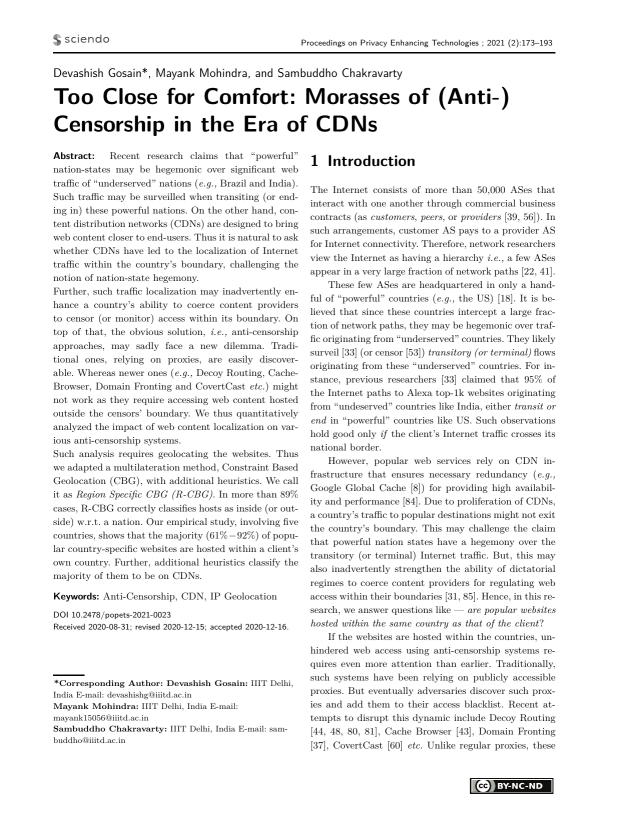Too Close for Comfort: Morasses of (Anti-) Censorship in the Era of CDNs
Authors: Devashish Gosain (IIIT Delhi, India), Mayank Mohindra (IIIT Delhi, India), Sambuddho Chakravarty (IIIT Delhi, India)
Volume: 2021
Issue: 2
Pages: 173–193
DOI: https://doi.org/10.2478/popets-2021-0023
Abstract: Recent research claims that “powerful” nation-states may be hegemonic over significant web traffic of “underserved” nations (e.g., Brazil and India). Such traffic may be surveilled when transiting (or ending in) these powerful nations. On the other hand, content distribution networks (CDNs) are designed to bring web content closer to end-users. Thus it is natural to ask whether CDNs have led to the localization of Internet traffic within the country’s boundary, challenging the notion of nation-state hegemony. Further, such traffic localization may inadvertently enhance a country’s ability to coerce content providers to censor (or monitor) access within its boundary. On top of that, the obvious solution, i.e., anti-censorship approaches, may sadly face a new dilemma. Traditional ones, relying on proxies, are easily discoverable. Whereas newer ones (e.g., Decoy Routing, CacheBrowser, Domain Fronting and CovertCast etc.) might not work as they require accessing web content hosted outside the censors’ boundary. We thus quantitatively analyzed the impact of web content localization on various anti-censorship systems. Such analysis requires geolocating the websites. Thus we adapted a multilateration method, Constraint Based Geolocation (CBG), with additional heuristics. We call it as Region Specific CBG (R-CBG). In more than 89% cases, R-CBG correctly classifies hosts as inside (or outside) w.r.t. a nation. Our empirical study, involving five countries, shows that the majority (61%−92%) of popular country-specific websites are hosted within a client’s own country. Further, additional heuristics classify the majority of them to be on CDNs.
Keywords: Anti-Censorship, CDN, IP Geolocation
Copyright in PoPETs articles are held by their authors. This article is published under a Creative Commons Attribution-NonCommercial-NoDerivs 3.0 license.

